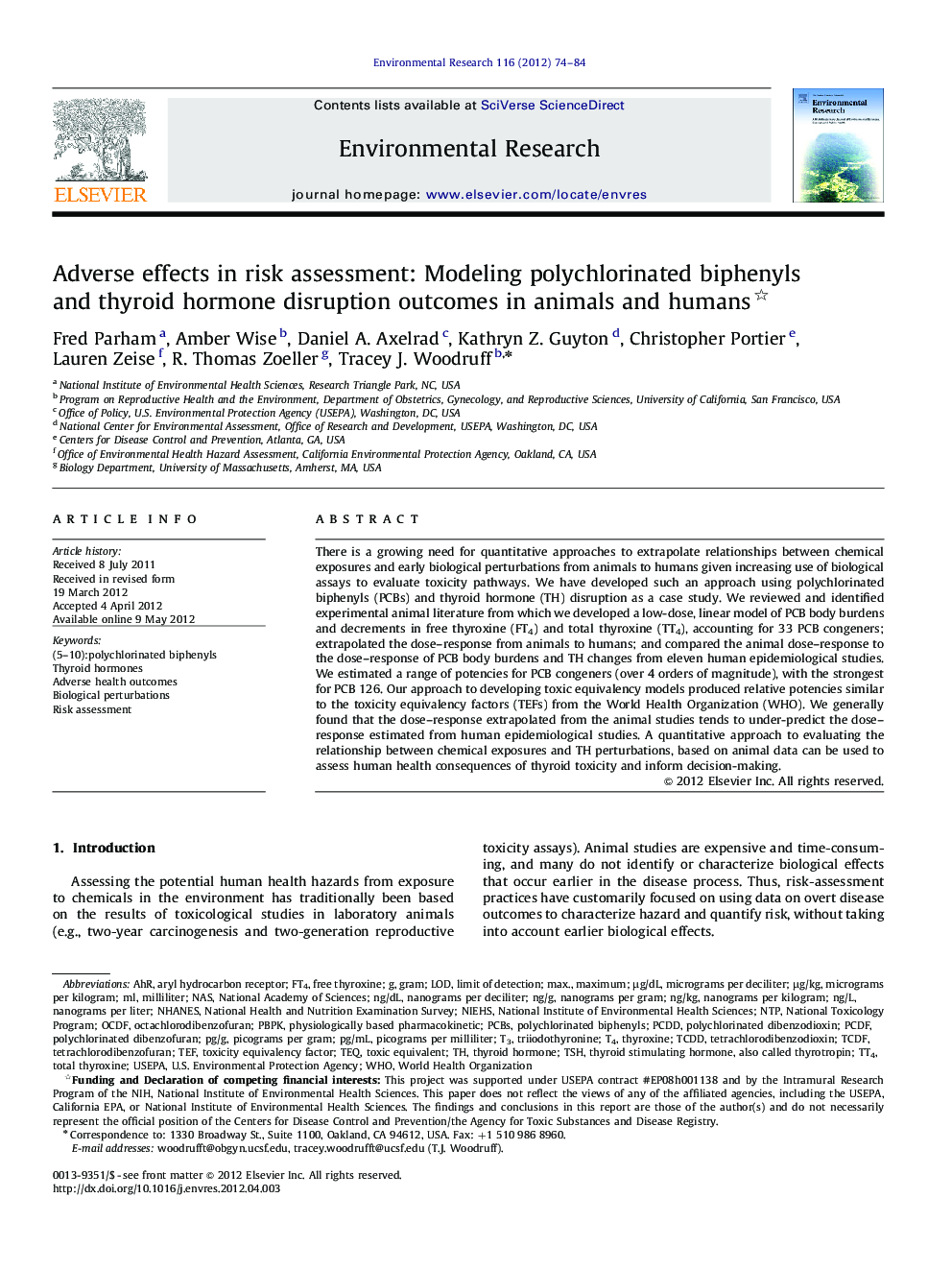| Article ID | Journal | Published Year | Pages | File Type |
|---|---|---|---|---|
| 4469964 | Environmental Research | 2012 | 11 Pages |
There is a growing need for quantitative approaches to extrapolate relationships between chemical exposures and early biological perturbations from animals to humans given increasing use of biological assays to evaluate toxicity pathways. We have developed such an approach using polychlorinated biphenyls (PCBs) and thyroid hormone (TH) disruption as a case study. We reviewed and identified experimental animal literature from which we developed a low-dose, linear model of PCB body burdens and decrements in free thyroxine (FT4) and total thyroxine (TT4), accounting for 33 PCB congeners; extrapolated the dose–response from animals to humans; and compared the animal dose–response to the dose–response of PCB body burdens and TH changes from eleven human epidemiological studies. We estimated a range of potencies for PCB congeners (over 4 orders of magnitude), with the strongest for PCB 126. Our approach to developing toxic equivalency models produced relative potencies similar to the toxicity equivalency factors (TEFs) from the World Health Organization (WHO). We generally found that the dose–response extrapolated from the animal studies tends to under-predict the dose–response estimated from human epidemiological studies. A quantitative approach to evaluating the relationship between chemical exposures and TH perturbations, based on animal data can be used to assess human health consequences of thyroid toxicity and inform decision-making.
► We model the relationship between PCBs and thyroid hormones in animals and humans. ► We compare dose–response for PBS and thyroid hormones between animals and humans. ► In animals, increasing PCBs are associated with decreasing thyroid hormones. ► In humans, increasing PCBs are generally associated with decreasing thyroid hormones. ► Estimated animal dose–response for PCB/thyroid underpredicts that in humans.
